Analysis of sliding mechanism of the cut slopes with multi-weak interlayers under rainfall
-
摘要:
文章基于抚顺西露天矿南帮滑坡工程实例,分析地下水及降雨入渗作用下顺倾软弱夹层边坡失稳的水力学模式,采用FLAC3D软件对抚顺西露天矿南帮边坡在地下水及降雨入渗作用下边坡变形的演化过程进行数值模拟分析,总结地下水及降雨入渗作用下顺倾多软弱夹层边坡的滑动规律。结果表明:降雨入渗和地下水的流动对坡体产生渗透压力,坡体破裂面大量发育,最大总位移约为1.27 m,形成多阶段滑坡,整体呈现混合式滑坡;边坡变形破坏期间,坡顶附近易沿弱层产生拉张破坏,为地表水渗透和地下水的运移提供通道,并呈现多滑面的特点,形成贯通的剪切破坏面,进一步导致边坡的多段变形;在地下水及降雨入渗影响下,边坡弱层含水率累积增加,损伤破裂,体积应变增量降低,有效应力降低,孔压累积上升,抗剪强度减低,从而诱发滑坡。相比降雨工况下,采用不同坡高高度回填压脚防护的边坡具有较高的安全系数,考虑工程实际综合比较不同防治方案,在降雨影响下,回填压脚至1/2坡高高度防治效果更好,边坡较稳定。
Abstract:This paper presents an analysis of the hydraulic model of the slope instability of a down-dipping soft sandwich slope, focusing on the southern slope landslide project of Fushun west open pit mine. The study investigates the effects of groundwater and rainfall infiltration on the slope deformation evolution process using numerical simulation analysis with FLAC3D software. The sliding law of the slope with soft interlayer under the action of groundwater and rainfall infiltration is summarized. The results show that rainfall infiltration and groundwater flow produce osmotic pressure on the slope, causing the development of a large number of rupture surfaces on the slope. The maximum cumulative displacement is about 1.27 m resulting in a multi-stage landslide with a mixed landslide type. During the deformation and failure of the slope, tension failure is prone to occur along the weak layer near the slope top, providing a channel for surface water infiltration and groundwater migration, and showing the characteristics of multiple sliding surface, forming a continuous shear failure surface, which further leads to the multi-stage deformation of the slope. Under the influence of groundwater and rainfall infiltration, the water content in the weak layer of slope accumulates, resulting in damage and rupture, reducing the volume strain increment, lowering the effective stress, increasing the pore pressure, and reduing the shear strength, thereby inducing landslide. To improve the stability of the slope, the study compares different prevention and control schemes, including backfilling presser foot with different slope heights. The study finds that compared with the rainfall condition, the slope protected by backfilling presser foot with different slope heights has a higher safety factor. Considering the engineering practice, the backfilling and pressure protection up to half of the slope height has a better effect on preventing and controlling the slope, and the slope is more stable.
-
Keywords:
- groundwater /
- rainfall infiltration /
- weak interlayer /
- slope /
- numerical simulation /
- Fushun west open pit mine
-
0. 引言
顺倾岩质边坡是指坡面与岩层走向和倾角相同的边坡,主要发育在开挖后的背斜和向斜两翼[1 − 2]。边坡岩质边坡是岩质边坡的主要破坏形式,是中国最大的边坡类型。最常见的滑坡是以软弱夹层为控制性滑面[3]。由于构造面薄弱,沿地层的岩质边坡易形成大面积滑坡,不稳定,影响因素复杂,难以预测[4 − 6]。顺倾岩质边坡成为边坡工程中的重难点[7]。
许多学者对顺倾软弱夹层边坡滑动规律问题进行研究。冯君等[8]建立了层状岩质边坡岩土试验模型,获得了层状岩质边坡施工和开挖过程中岩体破坏的规律和特征。陈从新等[9]人采用地质模型试验的方法分析了层状岩质边坡的失稳变形机制和边坡在岩石倾角作用下的稳定性,认为层状岩质边坡的破坏模式主要为滑动破坏。Michael[10]对沉积岩层中顺层平行剪切带的研究表明,平行海岸线带的形成是由于因为软弱层膨胀性、软岩蠕变、滑面带渐进式破坏等因素。舒继森等[11]分析了层状岩质边坡的静水压力,推导出了结构面上的动水压力,研究发现,静水压力对层状边坡稳定性的影响大于动水压力。魏刚等[12]分析的康杨滑坡得出黄河侧蚀作用和降水入渗形成软弱滑动带可能 是诱发康杨滑坡发生的主要因素。Hoke等[13]定义了层状岩质边坡的水力分布和水力作用,提出与干边坡相比,饱和水边坡的稳定性更低。赵磊等[14]持续监测滑坡湿度、土壤含水量、地下水位等,总结出降雨入渗率经验公式。聂永鹏等[15]采用FLAC3D数值模拟方法,分析了在建筑物附加荷载下老滑坡以及地基土体的应力应变发展规律,揭示了建筑加载下老滑坡稳定性的变化趋势和建筑物变形破坏机理。田辽西等[16]分析出静水压力的变化降低了岩土体的抗剪切能力、从而导致边坡岩体失稳。
在当前研究中,许多学者从边坡稳定性影响因素和破坏模式上对顺倾岩质边坡滑坡进行了详细研究,研究对象主要为单弱层或等厚顺倾岩质边坡。顺倾岩质边坡是以稳定性的变化为主线不断发展演化的,软弱夹层是顺倾岩质边坡稳定性的控制因素,对比含多软弱层的边坡与单弱层边坡,坡内的力学环境不同,由此其滑动演化机制也存在差异,与此同时,对顺倾软弱夹层边坡地下水及降雨入渗作用下的滑动演化机制的研究较少。论文基于抚顺西露天矿南帮滑坡工程实例,分析了地下水及降雨入渗作用下顺倾软弱夹层边坡失稳的水力学模式,采用FLAC3D软件对抚顺西露天矿南帮边坡在地下水及降雨入渗影响下,边坡变形破坏失稳动态的演化过程进行了模拟分析,找出边坡的位移场和破坏运动特征,对比体积应变增量及$x$向有效应力动态变化,分析边坡孔隙水压力的阶段积累特征,进而得到地下水及降雨入渗作用下顺倾含软弱夹层岩质边坡的滑动演化机制,为抚顺西露天矿南帮的灾害预防与治理提供参考。
1. 矿区地质概况
抚顺西露天矿南帮滑坡为岩质滑坡,总体坡度19°~27°,整体呈顺倾边坡。南帮边坡上部主要为出露的玄武岩,下部为凝灰岩,在坡脚堆积有矿区回填土等。在南帮滑坡后缘出现的地裂缝(图1)处,出露有花岗片麻岩、古风化壳、玄武岩夹煤线、凝灰岩等软弱破碎带等。边坡地表为杂填土层,有1~50 m厚的人工堆积矸石,上部堆积岩土以为煤矸石、风化的玄武岩、页岩碎石等为主,厚度在1~50 m;滑坡底部基岩为质地坚硬的花岗片麻岩。通过矿区钻孔资料了解南帮边坡有两层主要滑面:上层滑动面位于玄武岩夹煤线、玄武岩夹凝灰岩层中;下层滑动面位于玄武岩与花岗片麻岩之间的古风化壳中。两层滑面在坡体下部剪出,滑面后缘在坡体顶部以地裂缝形式显露,滑面倾向北,前缘在坑底及坡脚以地面鼓胀和坡脚剪出形式显露。南帮工程地质剖面如图2所示。
通过对抚顺西露矿区水文地质资料的收集发现,抚顺地区雨量充沛,主要为海洋性气候,降水大部分在夏季7—8月份以暴雨形式出现,最大日降雨量为185.9 mm。南帮边坡内地下水埋藏较深,基岩裂隙水赋存于因风化形成的基岩裂隙中,含水岩层以玄武岩和凝灰岩为主。
2. 降雨入渗及强度理论
自然状态下,饱和及非饱和状态常同时存在于坡内,降雨入渗过程就是非饱和—饱和的转化过程[17]。
饱和土的抗剪强度通过Mohr-Coulomb破坏准则[18]和Terzaghi有效应力原理[19],可得:
$$ \tau = c' + \left( {\sigma - {\mu _{\rm{w}} }} \right)\tan \varphi ' $$ (1) 式中:$ \tau $——破坏时破坏面上的剪应力/Pa;
$ c' $——有效黏聚力/Pa;
$\sigma $——破坏面上有效应力/Pa;
$ {\mu _{\rm{w}} } $——孔隙水压力/Pa;
$ \varphi ' $——有效内摩擦角/(°)。
而非饱和土的抗剪强度为:
$$ \tau = c' + \left( {\sigma - {\mu _{\rm{a}} }} \right)\tan \varphi ' + \left( {{\mu _{\rm{a}} } - {\mu _{\rm{w}} }} \right)\tan {\varphi ^{\rm{b}}} $$ (2) 其中:$ {\mu _{\rm{a}} } $——孔隙中的气压/Pa;
$\mu _\alpha - {\mu _\omega }$——破坏时破坏面上的基质吸力,当气压为 0时,吸力为负的孔隙水压力/Pa;
${\varphi ^{\rm{b}}}$——抗剪强度随基质吸力而增加的速率/(m·s−1)。
二维饱和—非饱和的渗流控制方程可根据达西定律得:
$$ \frac{\partial }{{\partial x}}\left( {{k_x}\frac{{\partial h}}{{\partial x}}} \right) + \frac{\partial }{{\partial \textit{z}}}\left( {{k_\textit{z}}\frac{{\partial h}}{{\partial \textit{z}}}} \right) + S = \frac{{\partial \theta }}{{\partial t}} $$ (3) 式中:$ {k_x} $、$ {k_{\textit{z}}} $——$ x $和z方向的渗透系数/(m·d−1);
$ h $——某点测压管水头/m;
$ S $——源汇项;
$ \theta $——含水率/%;
$ t $——时间/s。
孔隙水压力,也称静水压力,是降雨诱发滑坡的主要机制[20]。降雨入渗和地下水的流动增加孔隙水压力,降低有效应力,最终会削弱岩土体的物理力学指标,改变岩土体的力学性质,降低边坡稳定性。
3. 数值模型及参数设定
对抚顺西露天矿南帮滑坡形成机制的研究,提出水与重力作用下南帮滑坡形成机制的概念模型,模拟选取抚顺西露天矿E1200南帮典型地质剖面为研究对象,南帮边坡模型见图3,数值模拟图见图4,其中模型长
1300 m,宽500 m,高510 m。根据矿区试验资料及工程类比法,对南北帮岩土的物理力学参数进行参考,以确定算例计算参数。岩土力学参数取值见表1。地层岩性 密度
/(kg·m−3)弹性模量
/GPa泊松比 黏聚力
/MPa抗拉强度
/MPa内摩擦角/(°) 渗透系数
/(m2·Pa−1·s−1)凝灰岩 2590 10 0.24 3 2 45 9E-10 凝灰岩(弱化) 2590 1 0.24 0.3 0.2 40 9E-10 玄武岩 2800 25 0.23 3 2 40 9E-10 玄武岩(弱化) 2800 2.5 0.23 0.3 0.2 35 9E-10 煤 1400 1.2 0.24 0.45 0.15 30 9E-10 煤(弱化) 1400 1.2 0.24 0.45 0.24 35 3E-9 弱层 2100 15 0.24 2.5 1.75 48 9E-10 弱层(弱化) 2100 0.018 0.4 0.003 0.01 10 9E-10 花岗片麻岩 2800 35 0.22 4 3 45 8E-9 回填土 1860 0.27 0.3 0.2 0.1 25 9E-10 回填土(弱化) 1860 0.027 0.3 0.02 0.01 20 9E-10 断层泥 1800 0.01 0.4 0.18 0.2 7 3E-9 油页岩 2550 5 0.22 0.15 0.35 35 9E-10 通过对现场地质条件调查,边坡中的弱层1(古风化壳)、弱层2(玄武岩夹煤线)为相对强透水层,弱层1与弱层2之间的玄武岩和弱层2以上岩层为弱透水层,基底岩层花岗片麻岩为相对隔水层,取比奥系数为1。本次数值模拟利用FLAC3D有限元仿真计算平台进行动力与渗流的耦合分析,对抚顺西露天矿南帮顺倾软弱夹层边坡进行分析。分析过程中,考虑降雨及地下水对南帮边坡演化过程的影响,初始阶段采用Mohr-Coulomb模型在模型成型后,确定边界条件,地下水设置左侧水头高410 m,右侧水头高160 m,重力固结模型,稳定后模型整体位移清零,重新定义材料为Finn模型,距坡表50 m距离的表土参数调整为弱化参数,设定坑底地面以下初始含水状态为饱水,在边坡顶部及坡面施加降雨入渗边界,入渗速率为185.9 mm/24 h,进行水−岩之间的渗流耦合分析,对地下水及降雨入渗作用下顺倾多软弱夹层边坡滑动过程进行演化模拟。
4. 数值模拟结果与分析
4.1 边坡位移状态分析
图5显示边坡在地下水及降雨作用下总位移变化图。图5(a)在地下水及降雨入渗作用下的初始阶段,坡体的最大位移主要出现在玄武岩弱层2及坡脚回填土附近,由于地下水的作用使玄武岩弱层2处首先发生蠕动变形,最大总位移量值约为0.60 m,坡角处最大总位移约为0.26 m,凝灰岩具有吸水性优良、导水性差的特性,含水量快速提升,导致回填土层在入渗初期破坏变形区域在边界面迅速发展,最大总位移约为0.25 m。
图5(b)显示随循环步长增加的第一阶段,地表雨水不断入渗,地下水位提升,导致土壤饱和度增加、抗剪强度减小、有效应力降低、体积应变增大、孔隙水压力上升,玄武岩最大变形区域沿弱层2向坡顶发展,降雨期间凝灰岩岩层含水量持续增加,边坡表面裸露的松散杂填土发生小型剥落,最大总位移约为0.8 m。降雨期间坡脚裸露煤层抗压强度降低,上部岩体重力产生的压应力导致煤层被挤出不断向外鼓胀。
图5(c)显示随着降雨和地下水的持续作用的第二阶段,玄武岩最大变形区域沿弱层2向坡顶发展并贯通,使坡顶产生裂缝,加速雨水入渗,抗剪强度减小,弱层2附近的岩体节理逐渐张开和错动,为地表水渗透和地下水的运移提供通道,弱层1处下部的岩体变形加剧,最大总位移约为0.88 m。弱层2上部形成明显的滑移面,最大总位移约为0.94 m。回填土滑移范围不断增大扩展至凝灰岩岩层,最大总位移约为0.90 m。
图5(d)表明第三阶段,边坡上部玄武岩发生二次垮塌,坡体最大变形区域集中到表层玄武岩中,最大总位移约为1.27 m。这意味着斜坡内的应力场在降雨和地下水的持续作用下迅速变化,形成了承压和潜水含水层混合水力模型。入渗过程中弱层土体强度降低,有效应力降低,孔压增大,边坡最大总位移增大,导致边坡稳定性显著降低。
4.2 边坡破坏状态分析
图6为地下水及降雨作用下坡体随循环步长增加塑性区变化状态,图6(a)表明,在地下水及降雨入渗作用下的初始阶段,边坡顶部、玄武岩弱层2及回填土层均出现了拉张破坏。在坡体中部弱层2周围的玄武岩及凝灰岩岩层处存在大量的剪切破坏区。
图6(b)表明边坡坡体产生的拉张破坏贯通坡顶,残余节理由于存在拉伸破坏逐渐张开,形成常见的后缘拉张裂缝,为降雨的入渗提供了良好的通道。回填土上部及沿凝灰岩边界区域产生拉张破坏,上部松散杂填土发生小型滑移。坡脚地面表层的拉张破坏会导致底鼓,这与抚顺西露天矿南帮现场滑坡后缘出现的地裂缝和坑底鼓胀破坏现象是一致的。
图6(c)表明,第二阶段时,随着降雨及地下水的持续作用,边坡体中当前发生剪切破坏的区域逐渐扩展延伸至坡体弱层2上方玄武岩处,剪切破坏区基本连通,预示着潜在滑面的形成。坡脚附近的破坏状态转变为当前剪坏状态,意味着滑坡将在坡脚剪出。
图6(d)表明,坡顶弱层1处出现拉张破坏,边坡体中剪切破坏的区域基本扩展至坡体弱层2上方整个玄武岩处,坡底出现剪切破坏,表明滑体将在坡脚部位剪出,最终堆积在坡底。由于边坡后缘孔隙水压力和动水压力的相互作用以及滑动面上承压含水层的承载力,边坡在雨季易发生失稳破坏。
为了便于更好地绘制南坡随时间推移的变形分布和发展情况,在南帮边坡设置监测点,具体位置如图7所示。
根据上述设置的边坡监测点对边坡变形演化过程进行跟踪监测,绘制如图8所示各监测点体积应变增量变化曲线及图9所示x方向有效应力变化曲线。
根据图表可以看出,监测点A3和A4体积应变增量在初始阶段持续变大,坡顶x向有效应力总体出现减小趋势,说明坡顶回填土中存在许多微裂缝,渗透性强,加速雨水渗透,点A3处形成裂隙与坡体内弱层2贯通,雨水径流汇入裂隙产生渗透压力,导致边坡土体含水量增大,孔隙压力加速累积,抗剪强度减小,表层不断破碎滑落,导致孔隙压力减小,有效压力增大。点A2体积应变量在发展第三阶段减小,点A1在第二阶段x轴反向压应力快速减小,表明点A1在降雨过程中含水量增大,岩体不断滑落外移,土体相对松散,孔隙压力随之增大,使滑动面上的有效应力及抗剪强度减低,导致滑坡失稳。B区与C区为边坡内部监测区域,体积应变量和x方向有效应力变化趋势相似,点B3和C3为弱层2内选取的监测点,点B5和C5为边坡表层选取的监测点,降雨期间边坡表层有限深度产生饱和区,孔隙压力增长速度快,雨水径流渗入裂隙与弱层贯通,导致弱层含水量增大,孔隙压力增大,岩体损伤破坏,形成潜在滑面。图8中点D1位于玄武岩底部,在第一阶段体积应变增量变大,点D2和D3在第三阶段体积应变量增长速率较快,图9中点D1、D2、D5的x向应力增大,第一阶段D3、D4有效应力快速降低,坡脚回填土在入渗初期迅速发展,体积应变增大,孔隙压力随之增大,表层松散土产生小型剥落,坡脚向外鼓胀。
综合稳定性计算分析结果和监测成果可知,抚顺西露天矿南帮顺倾含软弱夹层边坡在地下水及降雨入渗作用下稳定性较差,形成多次级滑块滑动,兼具后缘推移与前缘牵引特点,整体呈现混合式滑坡,这与郭富赟等[26]分析舟曲滑坡结论一致。第一阶段坡体顶部发生变形,产生裂隙为降雨入渗提供通道,第二阶段坡脚变形渐进向后发展,坡顶发生小型垮落,中后部滑移面贯通,推动滑体前缘,引起滑移-隆起-整体下滑破坏,滑坡后缘利于雨水入渗,第三阶段在降雨入渗、积聚作用下,边坡后部变形破坏,再次形成贯通滑动面,整体发生滑移-拉裂-剪断破坏。
5. 防治措施
在雨水入渗和地下水的双重作用下,边坡岩石破碎,稳定性低。持续发展的滑坡将影响露天矿的安全。因此,采取在边坡上修建排水沟、减小边坡角、覆盖人工植被等有效方法和措施,以提高边坡的结构稳定性。滑坡未采取抗桩、锚索等加固措施的原因主要是边坡岩石松动,边坡表面很难为锚索提供足够的锚固力。为了满足锚固强度的要求,就有必要延长锚链段的长度,从而增加成本。调整边坡角和坡脚进行回填压脚措施均能提高边坡稳定性,但回填压脚措施可增加排土场收容量,同时缩短压脚区域运动距离。故结合地质环境等因素,最终提出在坡脚进行回填压脚措施的治理措施。
对边坡进行压脚措施主要是保证边坡高度不变。采用土石等材料堆填在滑坡前缘,以确保边坡高度不变,控制边坡防护的稳定性满足安全要求。具体治理方案:在现状边坡基础上进行压脚,堆填高度设计方案为41 m(1/10坡高),82 m(1/5坡高),103 m(1/4坡高),137 m(1/3坡高),206.5 m(1/2坡高),246 m(3/5坡高),274(2/3坡高),309.5 m(3/4坡高)。采用极限平衡法,计算不同压脚方案的边坡稳定性系数,分析滑坡稳定性(表2)。
表 2 边坡防治方案稳定性评价结果Table 2. Stability evaluation results of slope control scheme工况 防治方案剖面图 边坡总位移变化云图 安全系数 稳定性分析 现状 

1.22 稳定 降雨 

0.71 不稳定 回填1/10
坡高

0.89 不稳定 回填1/5
坡高

0.96 不稳定 回填1/4
坡高

1.02 欠稳定 回填1/3
坡高

1.08 欠稳定 回填1/2
坡高

1.15 稳定 回填3/5
坡高

1.21 稳定 回填2/3
坡高

1.42 稳定 回填3/4
坡高

1.36 稳定 根据表2可知,边坡安全系数>1.1时,坡体稳定性较好;安全系数处于1.0~1.1间,坡体处于欠稳定状态;安全系数<1.0时,边坡即发生破坏。该边坡在自然条件下基本稳定,降雨后边坡处于失稳状态,安全系数降低了0.51,因此可认为降雨影响是边坡发生失稳的主要原因。在8种不同压脚高度的防治方案中,回填1/10坡高和回填1/5坡高的方案对边坡安全系数有所提高,但未起到明显防治效果;回填1/4坡高和回填1/3坡高的方案对固坡护坡产生一定的作用,边坡从不稳定状态转至欠稳定状态;回填1/2坡高和回填3/5坡高的防治方案起到了显著效果,两种方案中边坡弱层均发生蠕动变形,却未形成贯通剪切滑移面;回填2/3坡高和回填3/4坡高的防治方案对提高边坡稳定性同样起到显著效果,但需耗费大量回填物料,不符合工程措施的经济合理性。
相比边坡现状工况下,采用不同坡高高度回填压脚防护的边坡具有较高的安全系数。随着压脚高度提升边坡表面最大总位移量呈现出减小趋势,坡内部滑移区域分布相对稳定,安全系数增大,稳定性提高。说明边坡防治措施可以有效改善边坡应力场,控制边坡整体变形,提高边坡稳定性,为类似滑坡防护治理技术提供参考。最终考虑工程实际综合比较不同防治方案,在降雨影响下,回填压脚至1/2坡高高度防治效果更好,边坡较稳定。
6. 结论
(1)地下水及降雨入渗作用下,边坡形成多阶段滑坡,坡面产生最大变形区域的总位移约为1.27 m,滑坡整体兼具后缘推移与前缘牵引特点,呈现混合式滑坡。
(2)边坡变形破坏期间,在坡体内部的弱层首先发生蠕动变形,产生剪切破坏面,坡顶地面出现两级错动式地裂缝,呈现典型多滑面特点,为地表水渗透和地下水运移提供了通道,进一步加速了边坡变形。
(3)边坡土体失稳的过程中离不开孔隙水压力的作用,边坡内部土体随耦合作用含水率累积增加,体积应变增量降低,有效应力降低,孔压呈现阶段累积上升趋势,边坡形成滑动面启动后孔隙水压力具有瞬态爬升特点。
(4)在边坡稳定性分析成果基础上,提出了坡脚进行回填压脚的边坡防治措施,随着压脚高度提升边坡表面最大总位移量呈现出减小趋势,坡内部滑移区域分布相对稳定,安全系数增大,稳定性提高。
-
地层岩性 密度
/(kg·m−3)弹性模量
/GPa泊松比 黏聚力
/MPa抗拉强度
/MPa内摩擦角/(°) 渗透系数
/(m2·Pa−1·s−1)凝灰岩 2590 10 0.24 3 2 45 9E-10 凝灰岩(弱化) 2590 1 0.24 0.3 0.2 40 9E-10 玄武岩 2800 25 0.23 3 2 40 9E-10 玄武岩(弱化) 2800 2.5 0.23 0.3 0.2 35 9E-10 煤 1400 1.2 0.24 0.45 0.15 30 9E-10 煤(弱化) 1400 1.2 0.24 0.45 0.24 35 3E-9 弱层 2100 15 0.24 2.5 1.75 48 9E-10 弱层(弱化) 2100 0.018 0.4 0.003 0.01 10 9E-10 花岗片麻岩 2800 35 0.22 4 3 45 8E-9 回填土 1860 0.27 0.3 0.2 0.1 25 9E-10 回填土(弱化) 1860 0.027 0.3 0.02 0.01 20 9E-10 断层泥 1800 0.01 0.4 0.18 0.2 7 3E-9 油页岩 2550 5 0.22 0.15 0.35 35 9E-10 表 2 边坡防治方案稳定性评价结果
Table 2 Stability evaluation results of slope control scheme
工况 防治方案剖面图 边坡总位移变化云图 安全系数 稳定性分析 现状 

1.22 稳定 降雨 

0.71 不稳定 回填1/10
坡高

0.89 不稳定 回填1/5
坡高

0.96 不稳定 回填1/4
坡高

1.02 欠稳定 回填1/3
坡高

1.08 欠稳定 回填1/2
坡高

1.15 稳定 回填3/5
坡高

1.21 稳定 回填2/3
坡高

1.42 稳定 回填3/4
坡高

1.36 稳定 -
[1] 李安洪, 周德培, 冯君. 顺层岩质边坡稳定性分析与支挡防护设计[M]. 北京: 人民交通出版社, 2011 LI Anhong, ZHOU Depei, FENG Jun. Stability analysis and retaining protection design of bedding rock slope[M]. Beijing: China Communications Press, 2011. (in Chinese)
[2] 蒋先念,张晨阳. 三峡库区典型顺斜向岩质滑坡变形破坏特征及失稳机制分析[J]. 中国地质灾害与防治学报,2021,32(2):36 − 42. [JIANG Xiannian,ZHANG Chenyang. Deformation characteristics and failure mechanism of large-scale obliquely dip rock landslide in the Three Gorges Reservoir Region[J]. The Chinese Journal of Geological Hazard and Control,2021,32(2):36 − 42. (in Chinese with English abstract) JIANG Xiannian, ZHANG Chenyang. Deformation characteristics and failure mechanism of large-scale obliquely dip rock landslide in the Three Gorges Reservoir Region[J]. The Chinese Journal of Geological Hazard and Control, 2021, 32(2): 36-42. (in Chinese with English abstract)
[3] 李守定,李晓,吴疆,等. 大型基岩顺层滑坡滑带形成演化过程与模式[J]. 岩石力学与工程学报,2007,26(12):2473 − 2480. [LI Shouding,LI Xiao,WU Jiang,et al. Evolution process and pattern of sliding zone in large consequent bedding rock landslide[J]. Chinese Journal of Rock Mechanics and Engineering,2007,26(12):2473 − 2480. (in Chinese with English abstract) DOI: 10.3321/j.issn:1000-6915.2007.12.012 LI Shouding, LI Xiao, WU Jiang, et al. Evolution process and pattern of sliding zone in large consequent bedding rock landslide[J]. Chinese Journal of Rock Mechanics and Engineering, 2007, 26(12): 2473-2480. (in Chinese with English abstract) DOI: 10.3321/j.issn:1000-6915.2007.12.012
[4] 张璟,陈文胜,蒋茂林. 等厚顺层岩质边坡稳定性的模型试验研究及数值验证[J]. 北方交通,2020,378(10):40 − 44. [ZHANG Jing,CHEN Wensheng,JIANG Maolin. Model test study and numerical verification of stability of bedding rock slope with equal thickness[J]. Northern Communications,2020,378(10):40 − 44. (in Chinese with English abstract) ZHANG Jing, CHEN Wensheng, JIANG Maolin. Model test study and numerical verification of stability of bedding rock slope with equal thickness[J]. Northern Communications, 2020, 378(10): 40-44. (in Chinese with English abstract)
[5] 贺小黑,彭鑫,谭建民,等. 地下水渗流对崩坡积滑坡稳定性和变形的影响—以湖南安化春风滑坡群为例[J]. 中国地质灾害与防治学报,2020,31(6):96 − 103. [HE Xiaohei,PENG Xin,TAN Jianmin,et al. Influence of groundwater seepage on stability and deformation of colluvial deposit landslide:Taking Chunfeng landslide group in Anhua County of Hunan Province as an example[J]. The Chinese Journal of Geological Hazard and Control,2020,31(6):96 − 103. (in Chinese with English abstract) HE Xiaohei, PENG Xin, TAN Jianmin, et al. Influence of groundwater seepage on stability and deformation of colluvial deposit landslide: taking Chunfeng landslide group in Anhua County of Hunan Province as an example[J]. The Chinese Journal of Geological Hazard and Control, 2020, 31(6): 96-103. (in Chinese with English abstract)
[6] 陈林万,张晓超,裴向军,等. 降雨诱发直线型黄土填方边坡失稳模型试验[J]. 水文地质工程地质,2021,48(6):151 − 160. [CHEN Linwan,ZHANG Xiaochao,PEI Xiangjun,et al. Model test of the linear loess fill slope instability induced by rainfall[J]. Hydrogeology & Engineering Geology,2021,48(6):151 − 160. (in Chinese with English abstract) DOI: 10.16030/j.cnki.issn.1000-3665.202010041 CHEN Linwan, ZHANG Xiaochao, PEI Xiangjun, et al. Model test of the linear loess fill slope instability induced by rainfall[J]. Hydrogeology & Engineering Geology, 2021, 48(6): 151-160. (in Chinese with English abstract) DOI: 10.16030/j.cnki.issn.1000-3665.202010041
[7] 王智德,夏元友,夏国邦,等. 顺层岩质边坡稳定性极限分析上限法[J]. 岩土力学,2015,36(2):576 − 583. [WANG Zhide,XIA Yuanyou,XIA Guobang,et al. Upper bound limit analysis method for stability analysis of bedding rock slopes[J]. Rock and Soil Mechanics,2015,36(2):576 − 583. (in Chinese with English abstract) WANG Zhide, XIA Yuanyou, XIA Guobang, et al. Upper bound limit analysis method for stability analysis of bedding rock slopes[J]. Rock and Soil Mechanics, 2015, 36(2): 576-583. (in Chinese with English abstract)
[8] 冯君,周德培,李安洪. 顺层岩质边坡开挖稳定性研究[J]. 岩石力学与工程学报,2005,24(9):1474 − 1478. [FENG Jun,ZHOU Depei,LI Anhong. Research on stability of rock bedded slopes[J]. Chinese Journal of Rock Mechanics and Engineering,2005,24(9):1474 − 1478. (in Chinese with English abstract) DOI: 10.3321/j.issn:1000-6915.2005.09.003 FENG Jun, ZHOU Depei, LI Anhong. Research on stability of rock bedded slopes[J]. Chinese Journal of Rock Mechanics and Engineering, 2005, 24(9): 1474-1478. (in Chinese with English abstract) DOI: 10.3321/j.issn:1000-6915.2005.09.003
[9] 陈从新,黄平路,卢增木. 岩层倾角影响顺层岩石边坡稳定性的模型试验研究[J]. 岩土力学,2007,28(3):476 − 481. [CHEN Congxin,HUANG Pinglu,LU Zengmu. Study on correlation between stability of consequent rock slope and obliquity of rock layer by simulation experiment[J]. Rock and Soil Mechanics,2007,28(3):476 − 481. (in Chinese with English abstract) DOI: 10.3969/j.issn.1000-7598.2007.03.009 CHEN Congxin, HUANG Pinglu, LU Zengmu. Study on correlation between stability of consequent rock slope and obliquity of rock layer by simulation experiment[J]. Rock and Soil Mechanics, 2007, 28(3): 476-481. (in Chinese with English abstract) DOI: 10.3969/j.issn.1000-7598.2007.03.009
[10] HART M W. Bedding-parallel shear zones as landslide mechanisms in horizontal sedimentary rocks[J]. Environmental and Engineering Geoscience,2000,6(2):95 − 113. DOI: 10.2113/gseegeosci.6.2.95
[11] 舒继森,唐震,才庆祥. 水力学作用下顺层岩质边坡稳定性研究[J]. 中国矿业大学学报,2012,41(4):521 − 525. [SHU Jisen,TANG Zhen,CAI Qingxiang. Research on stability of bedding rock slopes under hydraulic pressure[J]. Journal of China University of Mining & Technology,2012,41(4):521 − 525. (in Chinese with English abstract) SHU Jisen, TANG Zhen, CAI Qingxiang. Research on stability of bedding rock slopes under hydraulic pressure[J]. Journal of China University of Mining & Technology, 2012, 41(4): 521-525. (in Chinese with English abstract)
[12] 魏刚,殷志强,罗银飞,等. 黄河上游康杨滑坡堆积体特征及形成机理分析[J]. 中国地质灾害与防治学报,2022,33(2):1 − 8. [WEI Gang,YIN Zhiqiang,LUO Yinfei,et al. Analysis on the accumulation deposits characteristics and formation mechanism of Kangyang landslide in the upper reaches of Yellow River[J]. The Chinese Journal of Geological Hazard and Control,2022,33(2):1 − 8. (in Chinese with English abstract) DOI: 10.16031/j.cnki.issn.1003-8035.2022.02-01 WEI Gang, YIN Zhiqiang, LUO Yinfei, et al. Analysis on the accumulation deposits characteristics and formation mechanism of Kangyang landslide in the upper reaches of Yellow River[J]. The Chinese Journal of Geological Hazard and Control, 2022, 33(2): 1-8. (in Chinese with English abstract) DOI: 10.16031/j.cnki.issn.1003-8035.2022.02-01
[13] HOEK E, BRAY J. Rock slope engineering, 3rd ed[M]. London: [s.n.], 1981.
[14] 赵磊,付昱凯,陈春利,等. 青川浅层滑坡降雨入渗及稳定性研究[J]. 干旱区资源与环境,2022,36(1):111 − 119. [ZHAO Lei,FU Yukai,CHEN Chunli,et al. Study on rainfall infiltration and stability of Qingchuan shallow landslide[J]. Journal of Arid Land Resources and Environment,2022,36(1):111 − 119. (in Chinese with English abstract) DOI: 10.13448/j.cnki.jalre.2022.015 ZHAO Lei, FU Yukai, CHEN Chunli, et al. Study on rainfall infiltration and stability of Qingchuan shallow landslide[J]. Journal of Arid Land Resources and Environment, 2022, 36(1): 111-119. (in Chinese with English abstract) DOI: 10.13448/j.cnki.jalre.2022.015
[15] 聂永鹏,倪万魁,刘魁,等. 陕西延安某老滑坡场地上建筑物破坏机理分析[J]. 中国地质灾害与防治学报,2019,30(2):43 − 50. [NIE Yongpeng,NI Wankui,LIU Kui,et al. Damage mechanism of buildings on an old landslide in Yan’an City[J]. The Chinese Journal of Geological Hazard and Control,2019,30(2):43 − 50. (in Chinese with English abstract) DOI: 10.16031/j.cnki.issn.1003-8035.2019.02.06 NIE Yongpeng, NI Wankui, LIU Kui, et al. Damage mechanism of buildings on an old landslide in Yan'an City[J]. The Chinese Journal of Geological Hazard and Control, 2019, 30(2): 43-50. (in Chinese with English abstract) DOI: 10.16031/j.cnki.issn.1003-8035.2019.02.06
[16] 田辽西,赵玉苹,赵伟. 降雨入渗对某滑坡地下水渗流及滑坡稳定性影响[J]. 科学技术创新,2022(20):125 − 128. [TIAN Liaoxi,ZHAO Yuping,ZHAO Wei. Influence of rainfall infiltration on groundwater seepage and landslide stability of a landslide[J]. Scientific and Technological Innovation,2022(20):125 − 128. (in Chinese with English abstract) DOI: 10.3969/j.issn.1673-1328.2022.20.032 TIAN Liaoxi, ZHAO Yuping, ZHAO Wei. Influence of rainfall infiltration on groundwater seepage and landslide stability of a landslide[J]. Scientific and Technological Innovation, 2022(20): 125-128. (in Chinese with English abstract) DOI: 10.3969/j.issn.1673-1328.2022.20.032
[17] 刘艳辉,刘丽楠. 基于诱发机理的降雨型滑坡预警研究—以花岗岩风化壳二元结构斜坡为例[J]. 工程地质学报,2016,24(4):542 − 549. [LIU Yanhui,LIU Linan. Rainfall-induced mechanism based early warning model for slopes of dualistic layers in weathered granitic area[J]. Journal of Engineering Geology,2016,24(4):542 − 549. (in Chinese with English abstract) LIU Yanhui, LIU Linan. Rainfall-induced mechanism based early warning model for slopes of dualistic layers in weathered granitic area[J]. Journal of Engineering Geology, 2016, 24(4): 542-549. (in Chinese with English abstract)
[18] RICHARDS L A. Capillary conduction of liquids through porous mediums[J]. Physics,1931,1(5):318 − 333. DOI: 10.1063/1.1745010
[19] FREDLUND D G,XING A Q. Equations for the soil-water characteristic curve[J]. Canadian Geotechnical Journal,1994,31(4):521 − 532. DOI: 10.1139/t94-061
[20] 黄润秋,徐则民,许模. 地下水的致灾效应及异常地下水流诱发地质灾害[J]. 地球与环境,2005,33(3):1 − 9. [HUANG Runqiu,XU Zemin,XU Mo. Hazardous effects of underground water and extraordinary water flow-induced geohazards[J]. Geology-geochemistry,2005,33(3):1 − 9. (in Chinese with English abstract) DOI: 10.3969/j.issn.1672-9250.2005.03.001 HUANG Runqiu, XU Zemin, XU Mo. Hazardous effects of underground water and extraordinary water flow-induced geohazards[J]. Geology-geochemistry, 2005, 33(3): 1-9. (in Chinese with English abstract) DOI: 10.3969/j.issn.1672-9250.2005.03.001
[21] 郭子钰,刘向峰,王来贵,等. 抚顺西露天矿开挖作用下边坡变形破坏滑动规律研究[J]. 金属矿山,2021(12):190 − 199. [GUO Ziyu,LIU Xiangfeng,WANG Laigui,et al. Study on the slope deformation and failure sliding law under the excavation of Fushun west open-pit mine[J]. Metal Mine,2021(12):190 − 199. (in Chinese with English abstract) GUO Ziyu, LIU Xiangfeng, WANG Laigui, et al. Study on the slope deformation and failure sliding law under the excavation of Fushun west open-pit mine[J]. Metal Mine, 2021(12): 190-199. (in Chinese with English abstract)
[22] 郭子钰. 露天煤矿边坡变形破坏滑动全过程研究[D]. 阜新: 辽宁工程技术大学, 2021 GUO Ziyu. Study on the whole process of slope deformation, failure and sliding in open-pit coal mine[D]. Fuxin: Liaoning Technical University, 2021. (in Chinese with English abstract)
[23] 缪海宾. 抚顺西露天矿高陡边坡蠕变-大变形综合预警及防治技术研究[D]. 阜新: 辽宁工程技术大学, 2020 MIAO Haibin. Research on comprehensive early warning and prevention technology of creep-large deformation in high and steep slope of Fushun west open-pit mine[D]. Fuxin: Liaoning Technical University, 2020. (in Chinese with English abstract)
[24] 崔原. 抚顺西露天矿南帮滑坡地质特征与机理分析[D]. 长春: 吉林大学, 2018 CUI Yuan. Geological characteristics and mechanism analysis of south slope landslide in Fushun west open pit mine[D]. Changchun: Jilin University, 2018. (in Chinese with English abstract)
[25] 李超. 抚顺西露天矿南帮边坡稳定性分析[D]. 阜新: 辽宁工程技术大学, 2013 LI Chao. Stability analysis of south slope of Fushun west open pit mine[D]. Fuxin: Liaoning Technical University, 2013. (in Chinese with English abstract)
[26] 郭富赟,周小龙,火飞飙,等. 舟曲断裂带滑坡灾害效应与防治对策研究[J]. 中国地质灾害与防治学报,2022,33(6):80 − 89. [GUO Fuyun,ZHOU Xiaolong,HUO Feibiao,et al. Study on landslide disaster effect and prevention countermeasures in Zhouqu fault zone[J]. The Chinese Journal of Geological Hazard and Control,2022,33(6):80 − 89. (in Chinese with English abstract) GUO Fuyun, ZHOU Xiaolong, HUO Feibiao, et al. Study on landslide disaster effect and prevention countermeasures in Zhouqu fault zone[J]. The Chinese Journal of Geological Hazard and Control, 2022, 33(6): 80-89. (in Chinese with English abstract)




 下载:
下载:
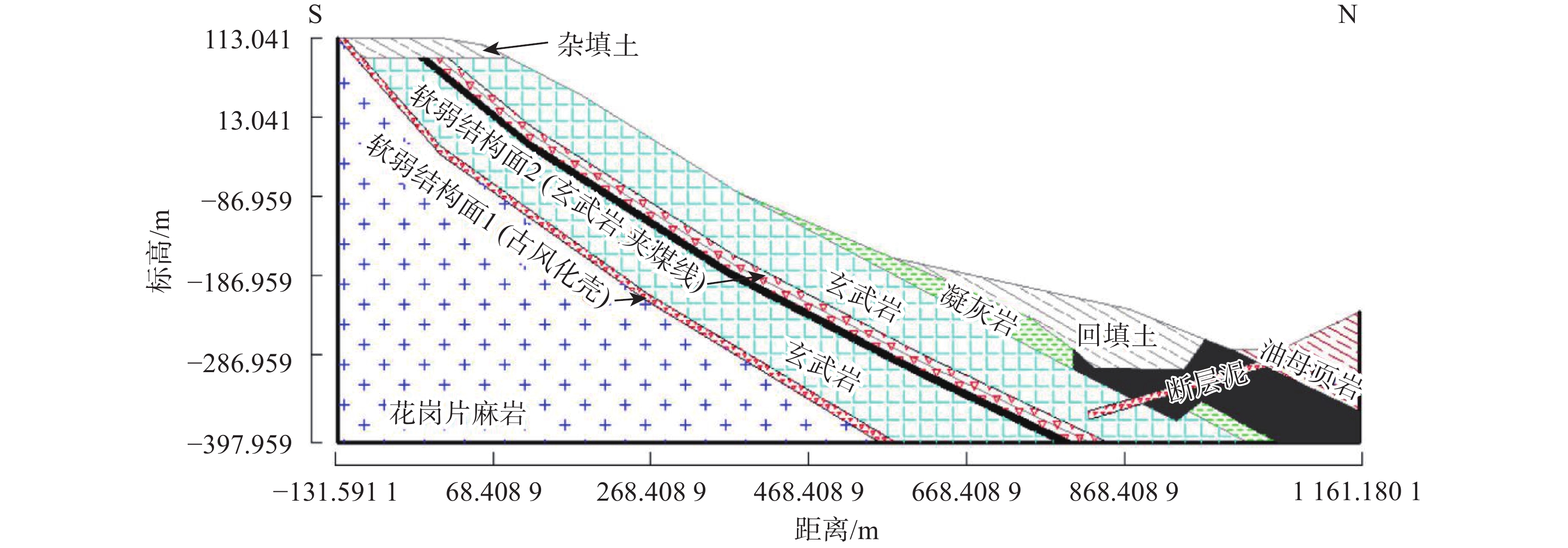


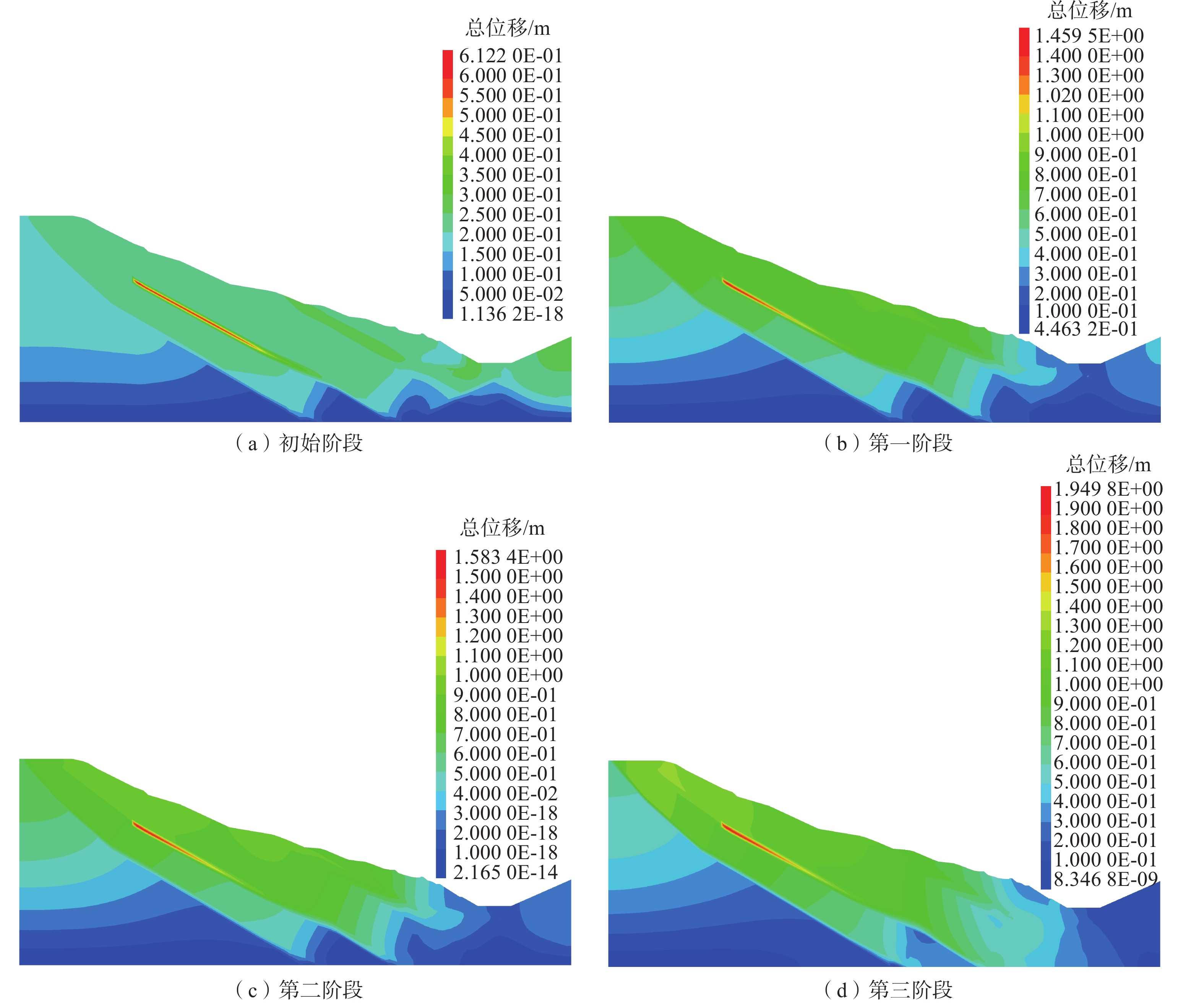
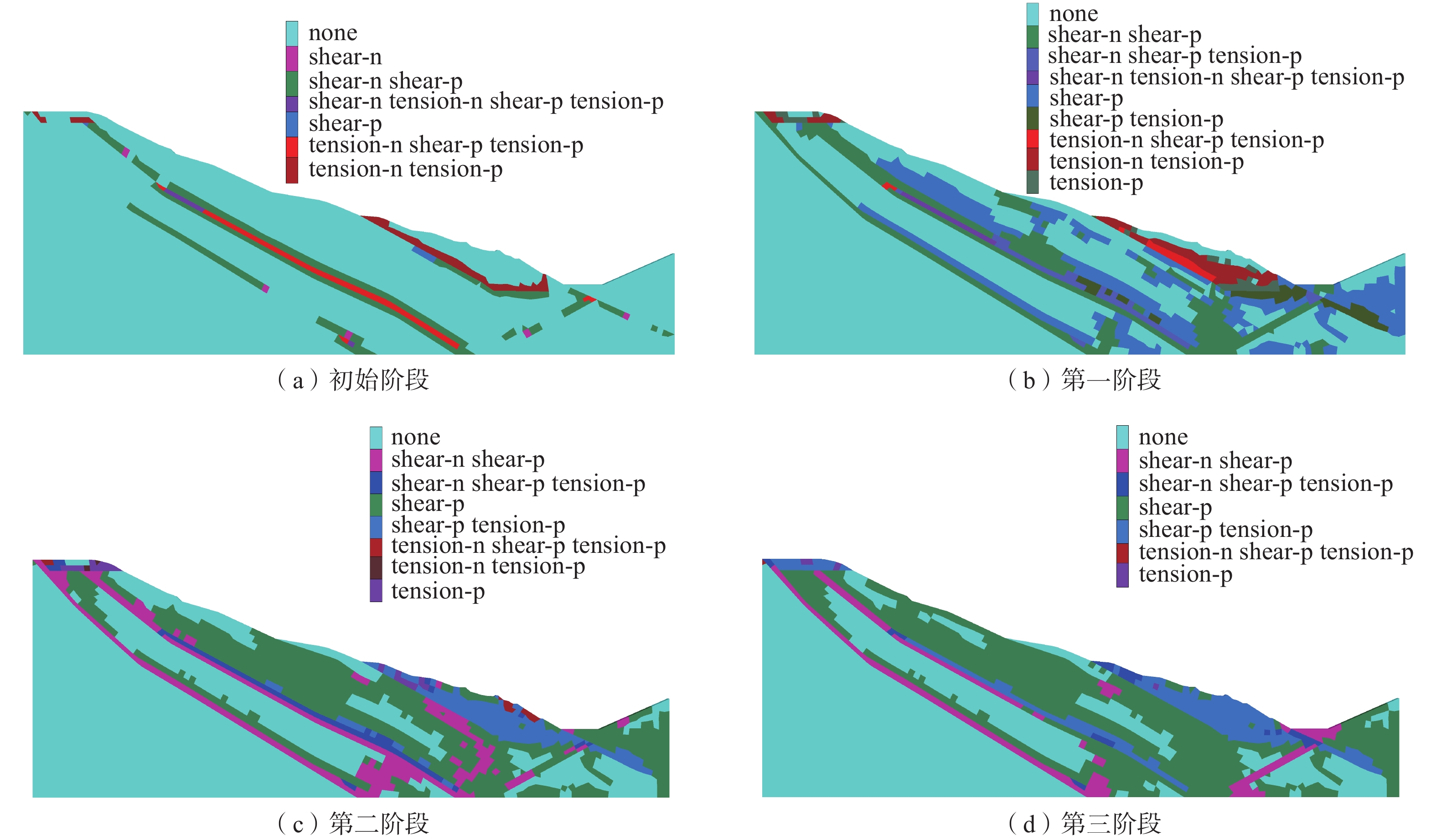
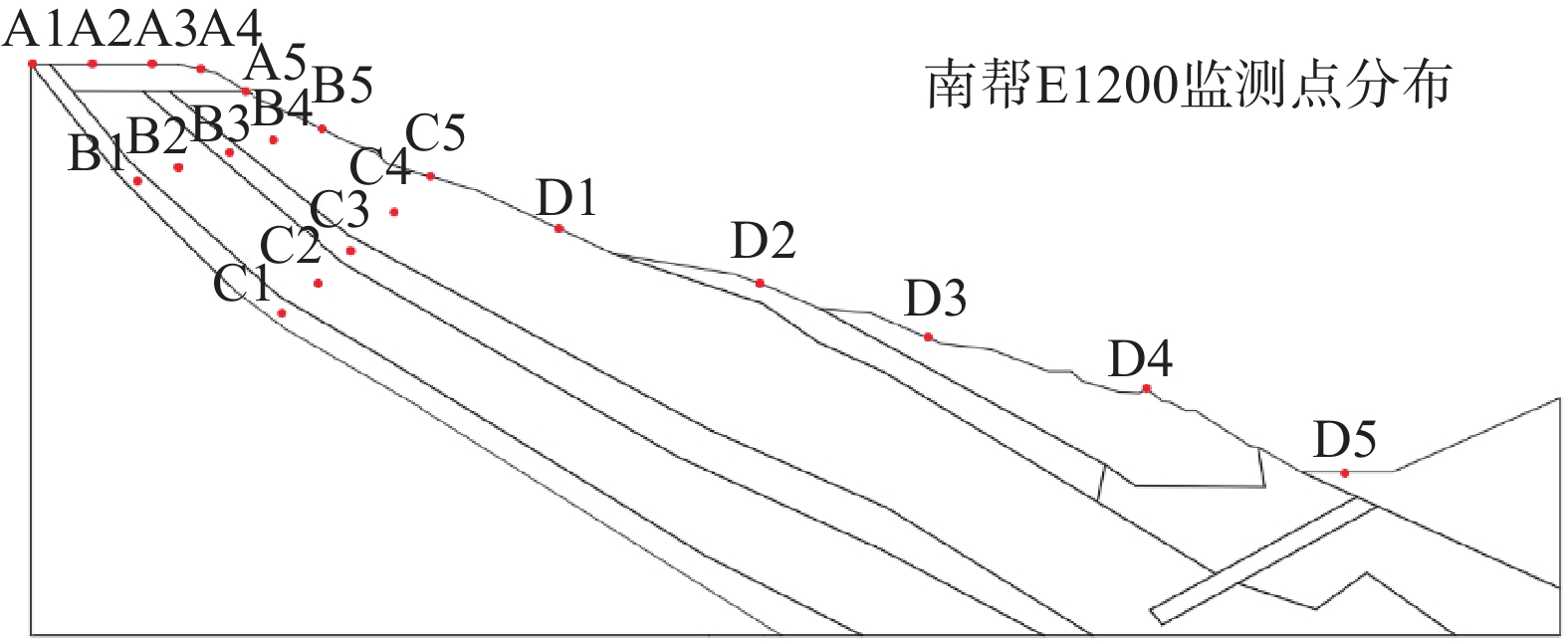
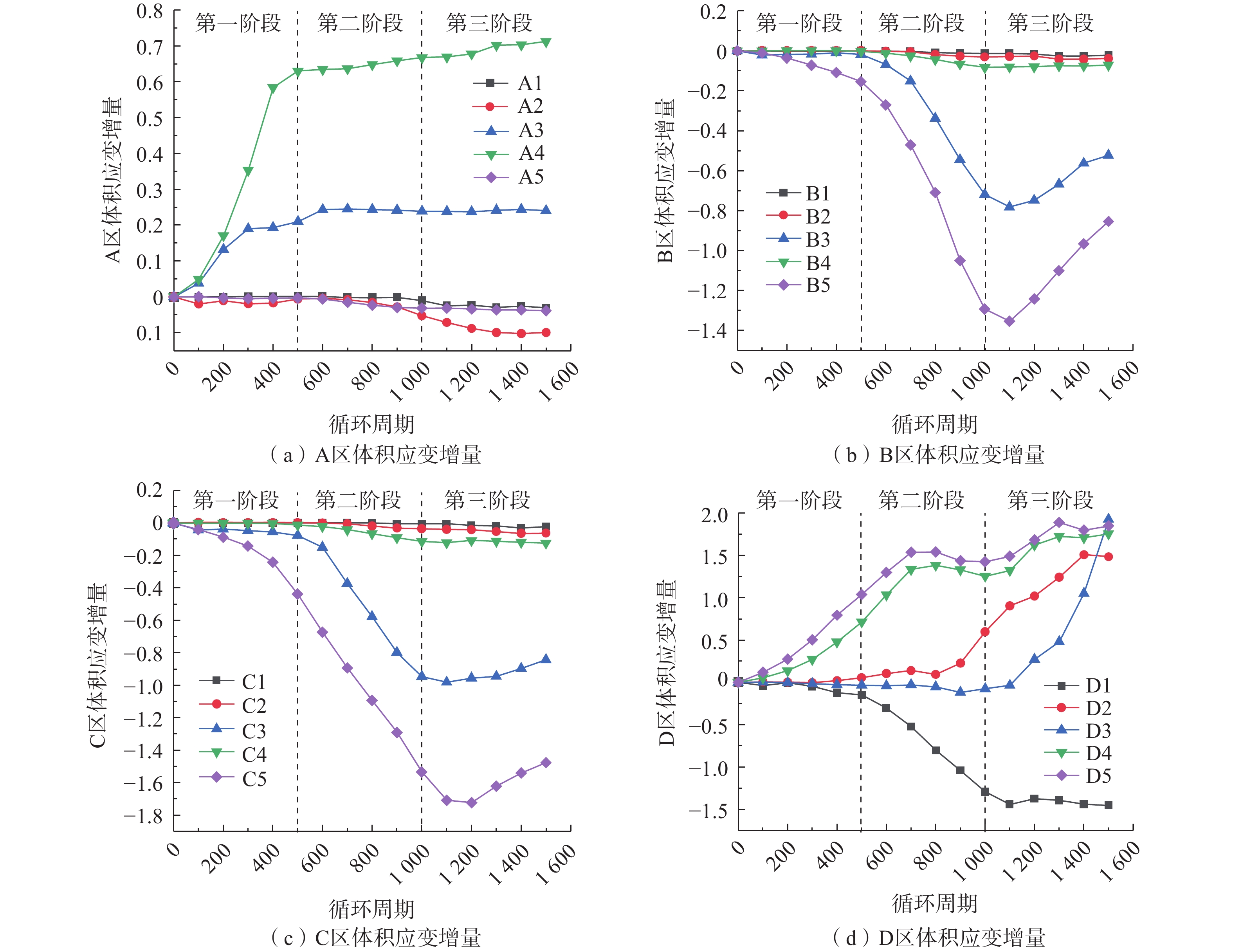
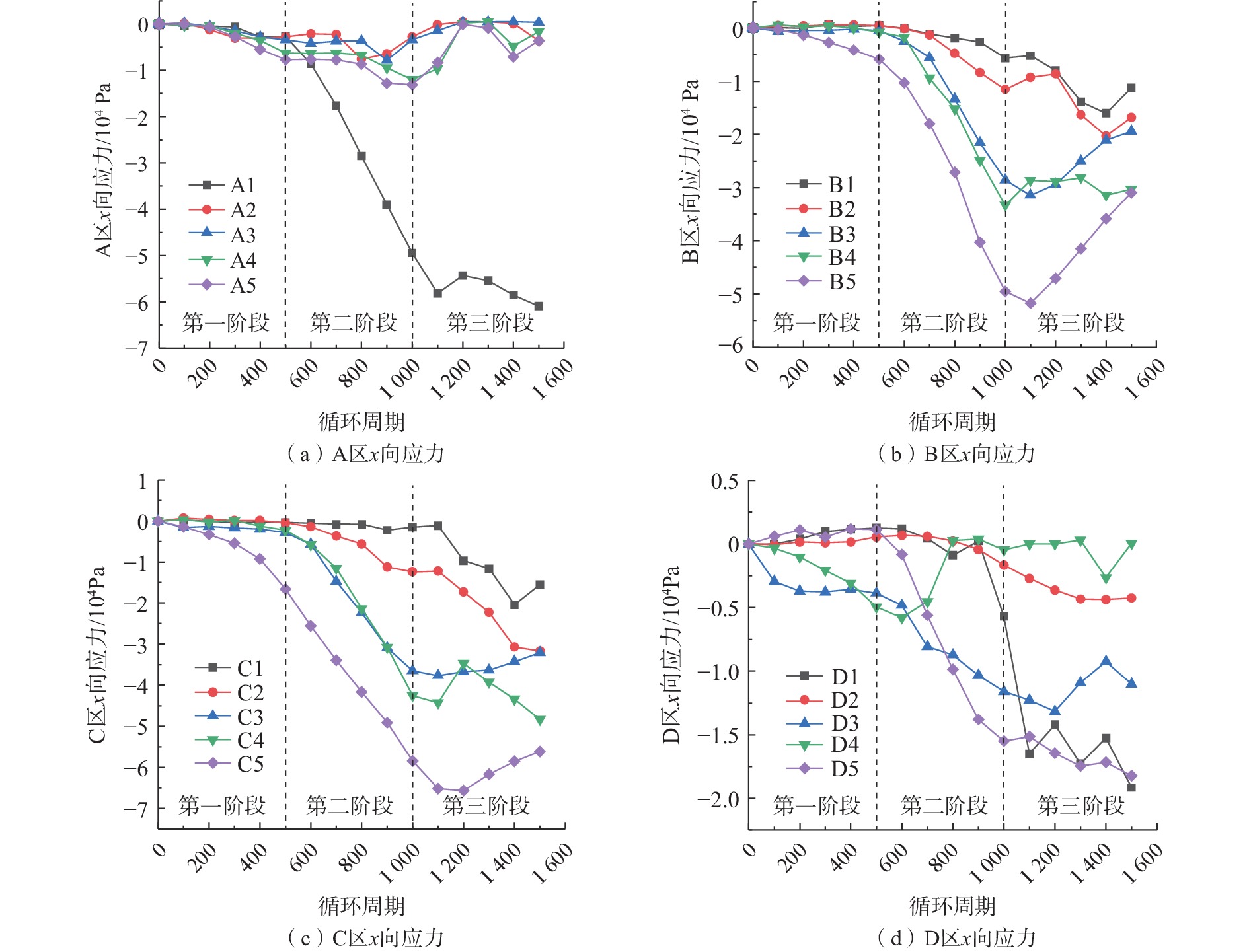
 邮件订阅
邮件订阅 RSS
RSS